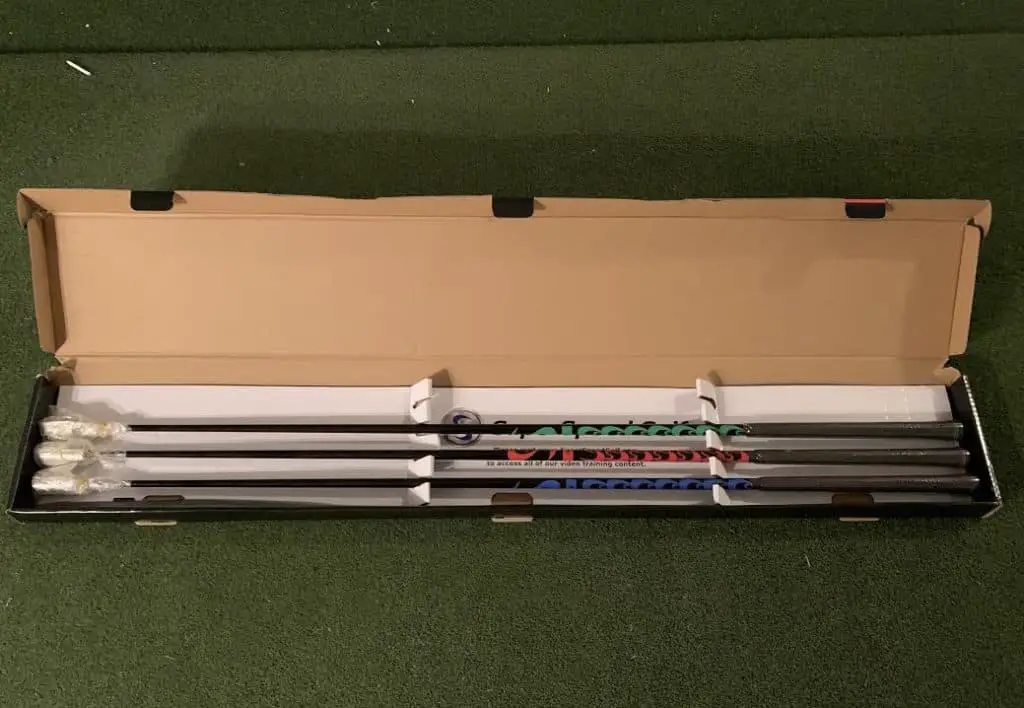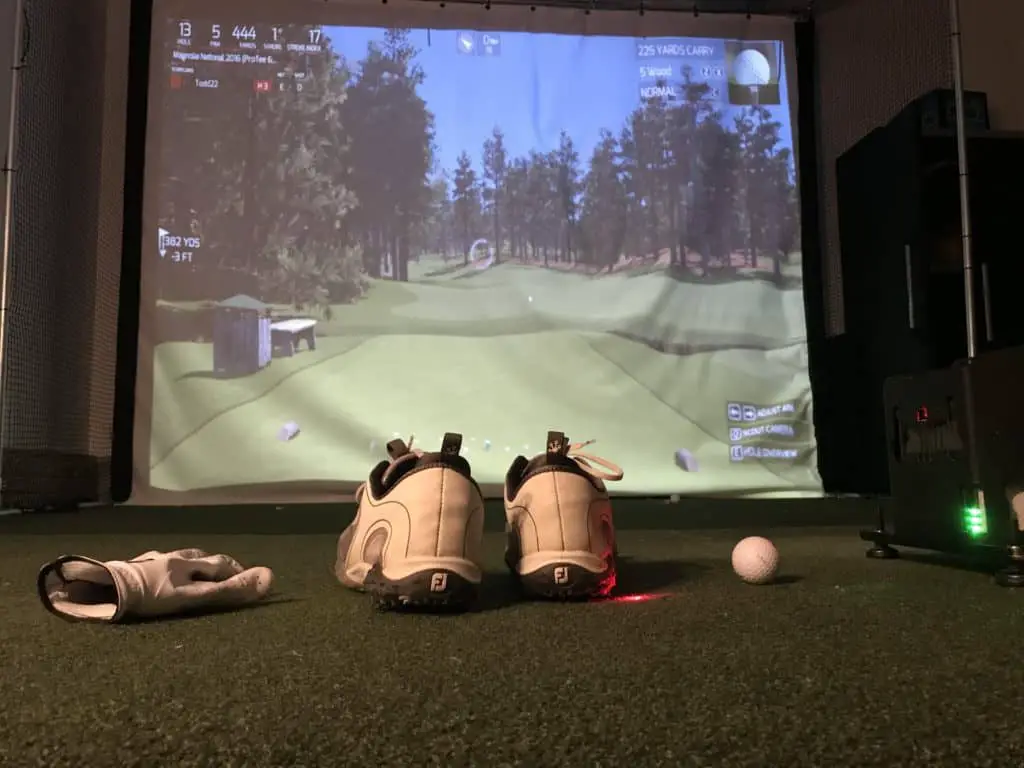They say it takes 10,000 hours to master a skill. Golf is no different. In fact, the most difficult part about golf are the various skills you must have:
- One has to be able to swing a driver and have plenty of distance.
- Have the precision necessary to be consistent with the irons.
- Possess the soft hands and skill necessary to loft a flop shot around the greens.
- And finally be able to lag putts from 40 feet, make them from 8 feet and ensure you don’t lip out the 3 footers.
The range of skills necessary to get very good at golf are wide ranging and take plenty of time to master. The 10,000 hours to master a skill makes a ton of sense when it comes to golf. Often the final determining factor on top of all of these skills is the mental side of the game.
So when we are asked if someone should practice golf everyday, the answer is rather simple!
Yes, if you can handle it physically and have a goal of playing at your highest potential, there is something you can do everyday to get better. The repetition of the game and daily practice will help someone reach their full potential.
Below, I will dive into the different ways you can practice and areas you should focus on to maximize your time spent everyday.
The last thing you want to do is waste time on your practice routines.
The one thing to keep in mind is that golf progress does not occur on a steady linear progression. There are going to be ups and downs, but at the end of the day, you will be better and will learn something or develop feel every time you practice, it just may not show up on the scorecard right away!

Should I Practice Everyday?
Topics I will dive into below:
- Set a weekly routine
- Train for speed
- Follow a swing coach
- The fastest way to get better results in score
- How to practice in the winter
Tip #1: Set A Weekly Routine
This will vary on the amount of time you have to practice each and every day. However, be careful not to become a driving range warrior. You must get out and play at least a couple of times a week to measure your progress. The ultimate measurement is the scorecard, but once again be realistic with your expectations.
Resource: 22 practice games
Oftentimes, you will see the results on the driving range of around the practice green before they show up in the scorecards. Taking newly developed skills to the golf course takes time and your expectations must be realistic.
Resource: Top 5 recommended swing aids!
Plenty of Time
If you have plenty of time, you should play a round a day and then spend time each day at the driving range and at the practice green working on your short game. Keep your practice time balanced and keep in mind that 60% of shots on a golf course taking place within 100 yards of the green.
Limited Time
If you have limited time due to work or other commitment and you only have 1-2 hours per day to work on your game, once again keep a balance each week and spend time on all parts of your game. Assess your game frequently and know where your strengths and weaknesses are. Some people might find themselves grinding on their weakness and forget to continue to develop their strengths.
One Round = Measuring Stick
For the rounds you get to play each week, set a round that is your measuring stick. Have something on the line or a goal for that day. Maybe find someone to make it somewhat competitive to get used to playing under some pressure. Your other rounds throughout the week can be more about taking your skills from the driving range to the golf course to see if they transfer, but make sure you set at least one round per week as your measuring stick.
Some may choose to play every round like it is a tournament round. This is a quick way to learn how to play under pressure to test new swing thoughts or mechanics. It will help you if your ultimate goal is to play tournament golf. Play the ball as it lies and be honest with your scores. This is the best way to measure your progress.
Resource: How to get better at golf fast!
Tip #2: Train for Speed
It is pretty clear from the analytics on the PGA Tour that speed and distance are very important in reaching your full potential. The good news is that there are training systems to help just about any golfer improve their swing speed.
Recently, there have been plenty of pro golfers who have started to use the SuperSpeed Training System which is an overspeed training protocol that helps golfers increase their swing speed by 5-8%! And it works! There is a long list of tour players utilizing this system including Phil Mickelson and Jon Rahm.
Check current pricing on SuperSpeed Training System, here.
The every other day training routine gets the golfer pushing the limits from a physical and mental standpoint to increase speed. I have been able to gain 7-10 miles per hour in my golf swing and just the other day launch one 317 yards on a 370 yard par 4.
I was amazed at my new distance after some extensive work over the time. I was left with 53 yards to the hole. While the wind did aid my total distance, I am often at the 110 yard mark even on my best drives in the past. This added distance is a game changer for me!
Overall, the data is clear, the further you hit your driver, the shorter approach shot you have. The shorter approach shot you have, the closer you will hit the ball to the hole. The shorter the putt, the better chance of making the putt. Did you know that the PGA Tour make percentage from 8 feet is only 50%.
This shows the importance of getting your shots inside of 20 feet to give yourself a realistic chance at making the putt! Play these averages over time and the more approach shots you can get inside of 10-20 feet the more birdies you will make!
This training for speed should be part of your weekly routine!

Tip #3: Follow A Swing Coach
You have several different options here.
- Go take a series of lesson
- Sign up for online lessons
- Grow your knowledge and try to teach yourself
Sometimes golfers can get lost in the weeds of swing theory and approaches to the game. There are many different instructors out there that have various approaches. Whatever you do, stick with one person that you feel best fits your style and your current swing. Taking one time one day from one instructor and then shifting the next day, can you leave you confused with too many swing thoughts over your next tee shot.
Resource: Taking a golf lesson remotely (3 Tips)
I have completed many reviews of the different golf instructors out there that have a heavy online presence. All of these instructors know their stuff and can help you, but after your check them out try to stick with one! It will pay off in the long run:
Resource: How to get better at golf without lessons (11 Tips)
Tip #4: The Fastest Way to Lower Scores
The fastest way to lower scores if you want to maximize your time is the short game. These formula can be rather simple. If your goal is to break 80, check out this formula:
- Hit 6 out of 18 greens per round and make no higher than par
- Get up and down 5 out of the 12 times on the other holes, this is a 41% scrambling rate.
- Make nothing bigger than a bogey by keeping the ball in play
This leaves you with 11 pars and 7 bogeys. This is a 79 on a par 72 course. The great news is that if you keep the ball in play, do not make big numbers and get up and down just over 40% of the time, you can break 80!
Hitting 6 of the 18 greens doesn’t take great ball striking!
So the fastest way to lower scores is becoming a great short game player. Spend time around the practice green by playing different games. Utilize some block practice with chip and pitch shots and then practice putts inside of 10 feet. Get to the PGA Tour average of a make percentage of 50% from 8 feet.
Here is a formula that can be used to eventually get your game to the scratch level:
THE STATS – Scratch Golfer
| Greens in Regulation | 67% |
| Fairways Hit | 53% |
| Putts Per Hole | 1.67 |
| Scrambling | 54% |
| Sand Saves | 59% |
| Average Driving Distance | 251 |
I will point out the scrambling rate of 54% and the greens in regulation of 67%. Continue to practice your ball striking, training for speed and then become a great chipper and pitcher of the ball. You will leave your playing partners in envy of your short game and they will start to press.
The short game is a great place for any junior golfer to spend a high amount of time. They become encouraged by the number of parts and will naturally gain more distance and better ball striking as they grow and practice the game!
Tip #5: How To Practice in The Winter
The reality is that many of us face snowy, cold winters. There is nothing worse for progress than taking 3-5 months off of any skill that you are building. The key is to be able to set something up at your house to be able to continue to practice. You have several different options:
- A mat and net to hit golf shots
- A mat, net and portable launch monitor for immediate feedback.
- A golf simulator for immediate feedback and game like situations.
Here are 3 great recommendations:
The three options above are the three levels for most golfers. I have selected to go with option number 3 and have built a golf simulator in my garage. This technology continues to improve and actually cost less money than 10 years ago. What a great golfing world we now live in!
Three highly recommended golf mats, here.
Interested in a Golf Simulator? Check out these links below:
The results are the real deal and I have been able to take my average golf score, which ranged between 74 and 78 to between 70 and 74. This was a major improvement at this stage of my busy life and golfing journey. The real improvement comes from the increase in ball striking and the ability to hit irons closer to the hole.
Combine this with my SuperSpeed Training and I have more distance, better ball striking and am closer to the 10,000 hours that it takes to reach a master skill level! With only 2% of golfers able to break 80, you are in elite company once you reach certain levels. While we may never golf like the professional tour players, the ability to be scratch or somewhere close sets you apart with your player partners and your friends!

BONUS TIP!
Work on the mental side of the game. All of the speed, ball striking and short game mastery will get you to a certain level. However, you must be able to control your emotions, think clearly and make the right freewheeling swing when the score matters. There are two highly recommended books that I have read that will be worth your time!
